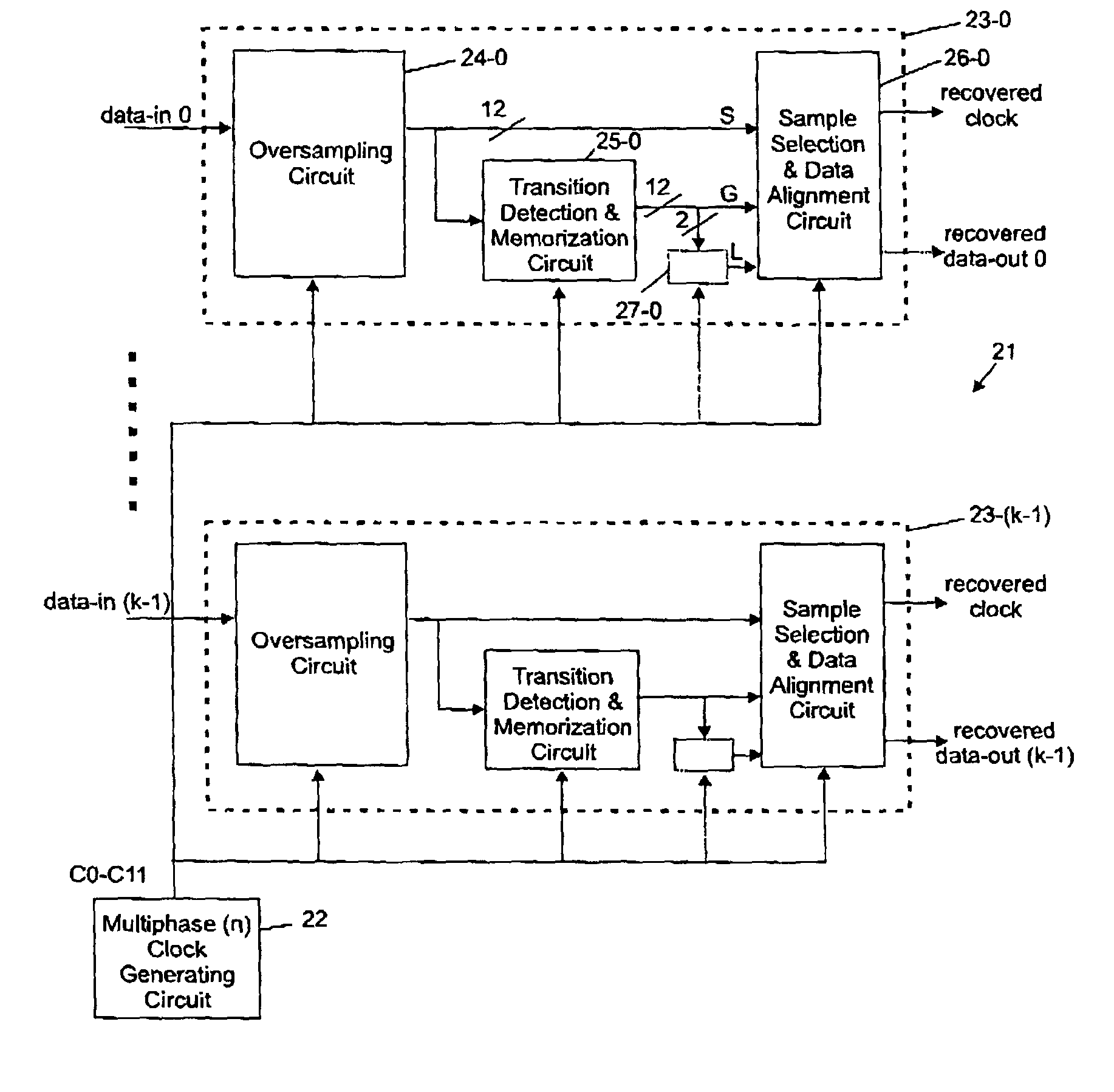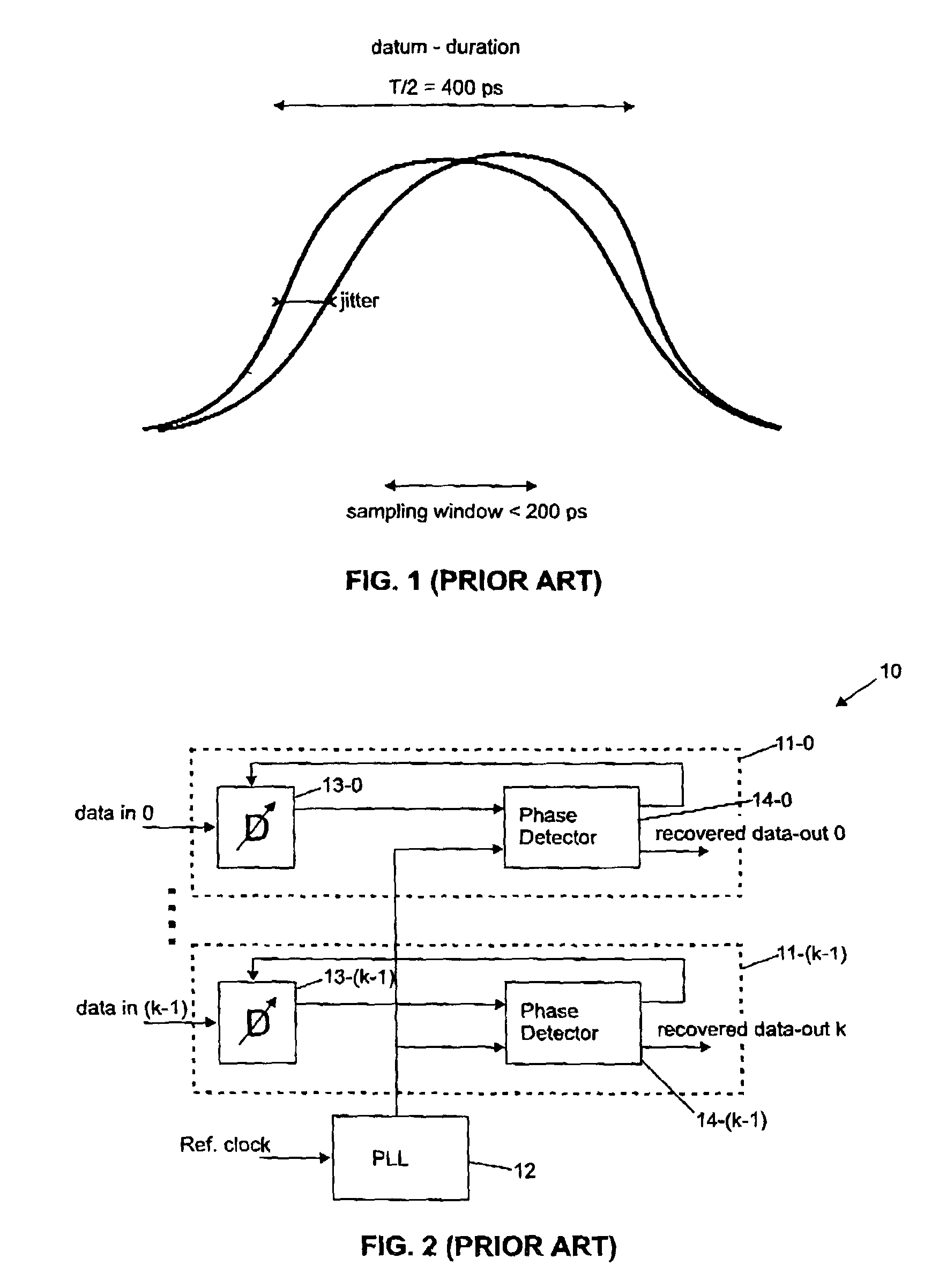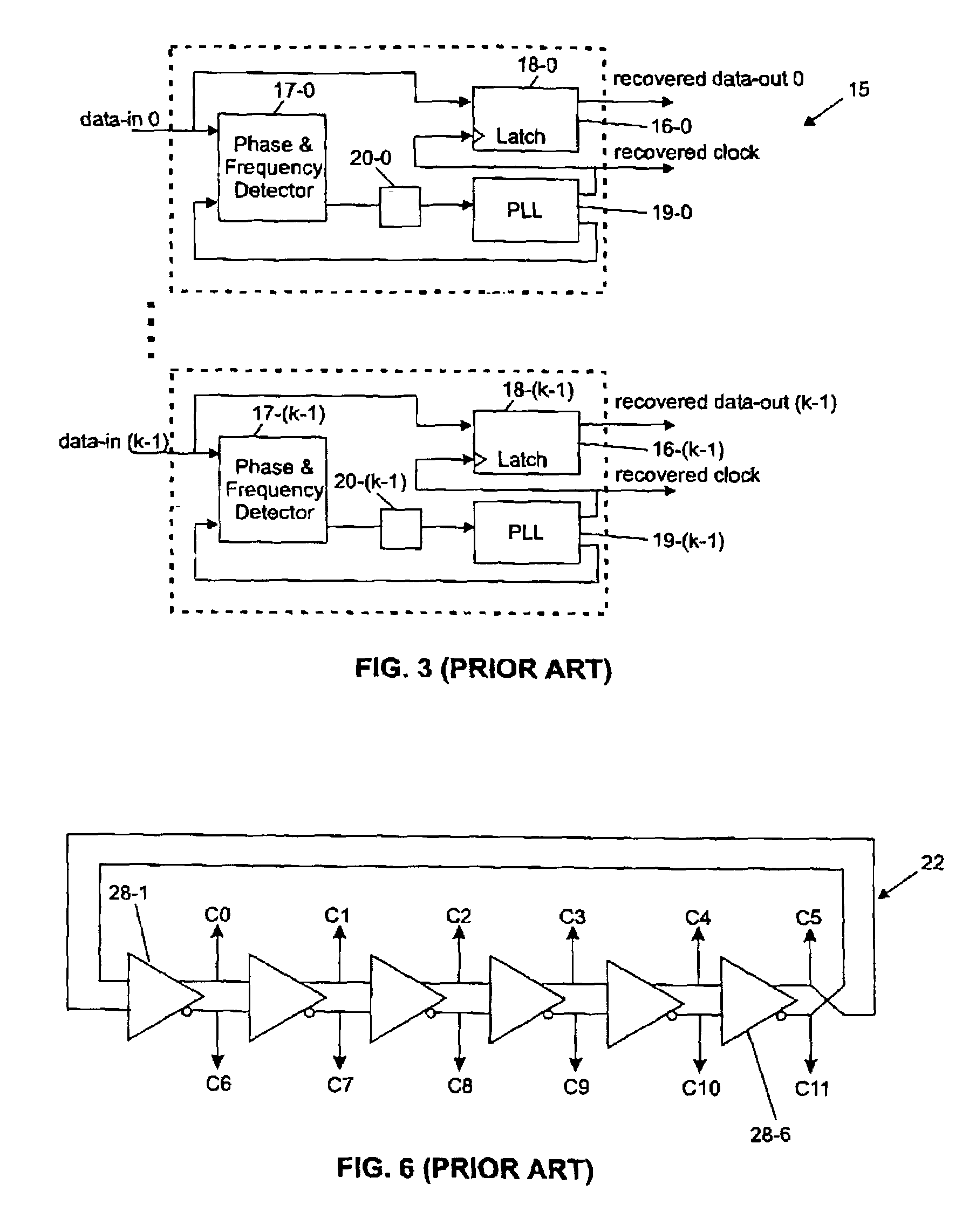Method and circuit for recovering a data signal from a stream of binary data
a data signal and stream technology, applied in the field of high-speed serial data communication, can solve the problems of reducing the overall performance of multi-channel cr circuits, limiting cr circuit jitter immunity, and further reducing the useful sampling window
- Summary
- Abstract
- Description
- Claims
- Application Information
AI Technical Summary
Benefits of technology
Problems solved by technology
Method used
Image
Examples
Embodiment Construction
[0034]In the conventional circuits described above by reference to FIGS. 2 and 3, two different phases of a reference clock signal delayed in time are used, one to detect a transition and the other to capture the data for subsequent processing. However, it should be noted that because of possible metastability problems, the particular sampled signal (or sample) obtained by performing the sampling at a data transition (logic state 1 to 0 or vice-versa) is not reliable to accurately locate the exact position of the transition and the detection is even more complicated by the presence of glitches and false detections. As a result, the conventional techniques of sampling that have been practiced so far appear to be close to the limit as the clock frequencies continue to sharply increase.
[0035]In essence, the method of the present invention that will be now described in detail, relies upon an over sampling technique and a specific signal processing method to determine which sampled signa...
PUM
 Login to View More
Login to View More Abstract
Description
Claims
Application Information
 Login to View More
Login to View More - R&D
- Intellectual Property
- Life Sciences
- Materials
- Tech Scout
- Unparalleled Data Quality
- Higher Quality Content
- 60% Fewer Hallucinations
Browse by: Latest US Patents, China's latest patents, Technical Efficacy Thesaurus, Application Domain, Technology Topic, Popular Technical Reports.
© 2025 PatSnap. All rights reserved.Legal|Privacy policy|Modern Slavery Act Transparency Statement|Sitemap|About US| Contact US: help@patsnap.com



